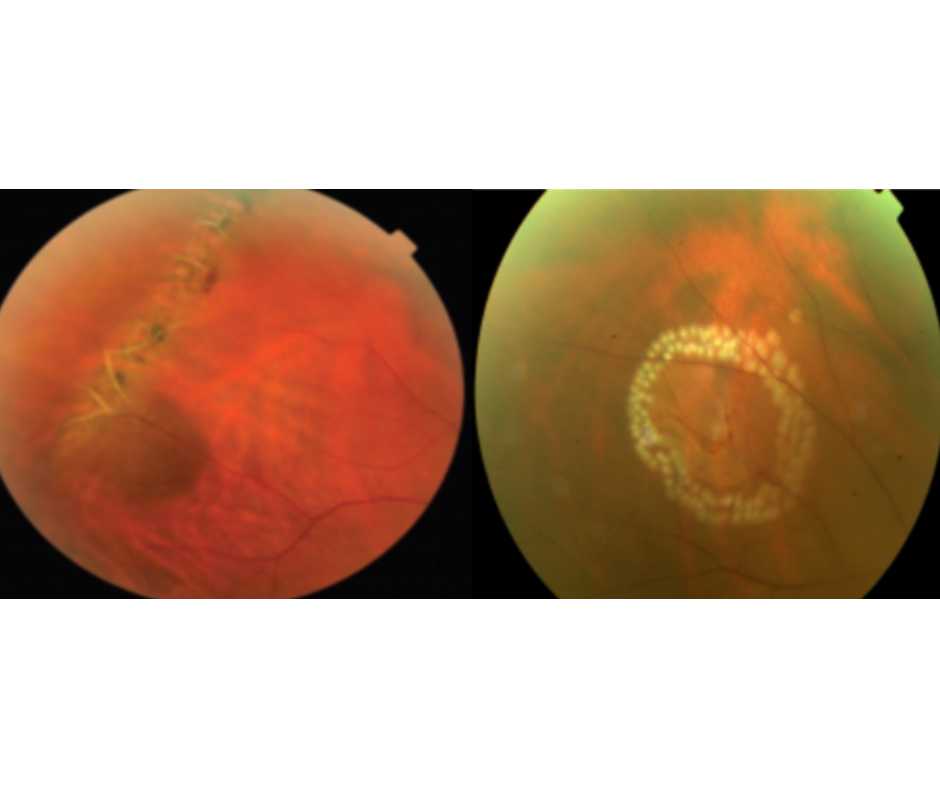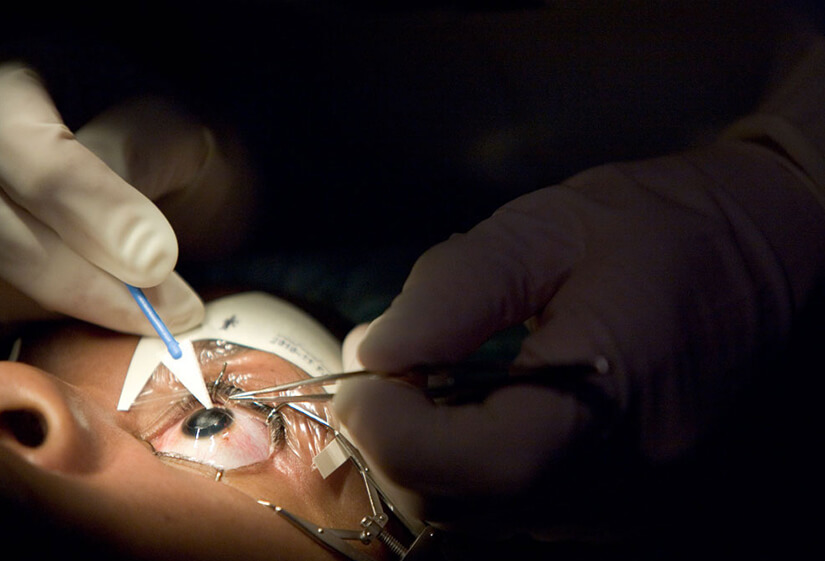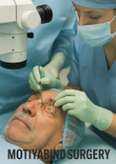The eyes are remarkable organs that allow us to experience the world around us. However, like any part of the body, they can be susceptible to various conditions that affect vision. Cataract and glaucoma are two such eye conditions that often cause concern for individuals as they age. In this article, we will delve into the intricacies of cataracts as well as glaucoma, exploring their causes, symptoms, treatments, and preventive measures.
Introduction To Cataract & Glaucoma:
As we age, it’s not uncommon for our vision to change. These two are prevalent eye conditions that can significantly impact the quality of our vision. Let’s take a closer look at these conditions and what steps can be taken to manage them effectively.
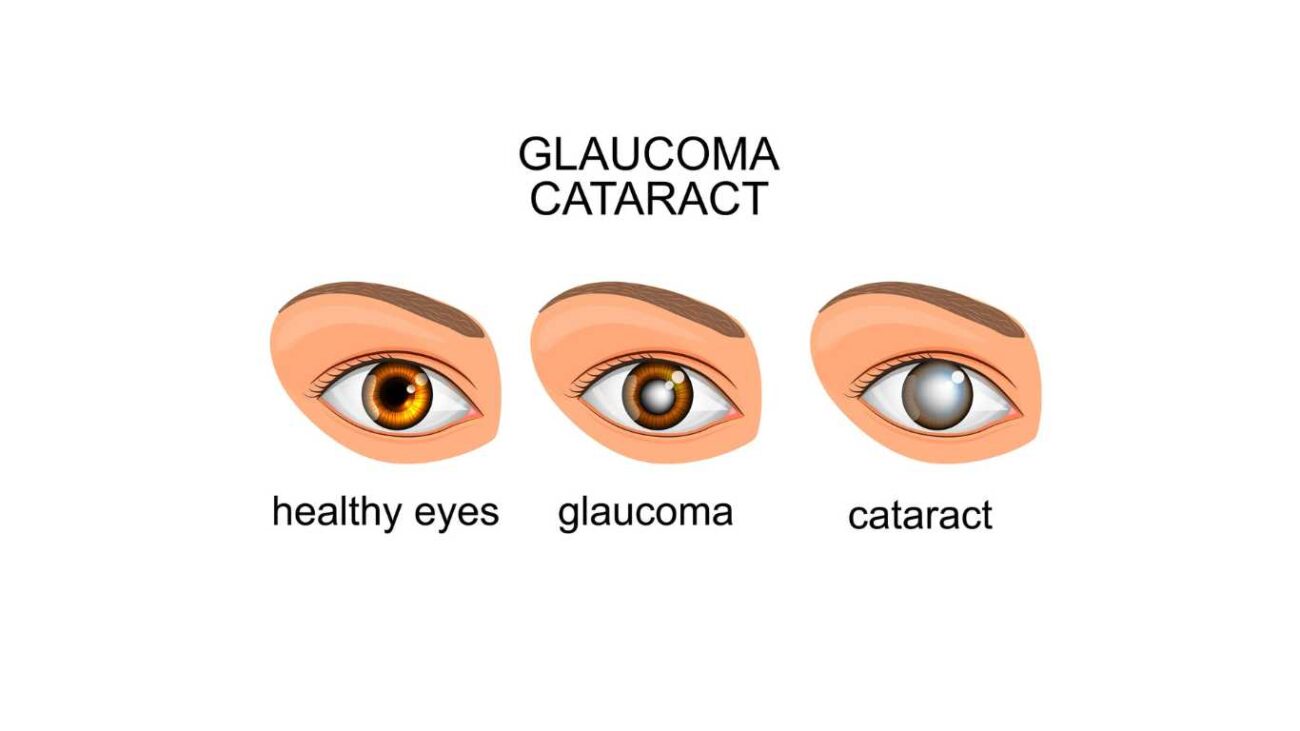
Understanding Cataract and Glaucoma :
What Are Cataracts?
Cataracts refer to the clouding of the eye’s natural lens, which lies behind the iris and the pupil. This clouding occurs gradually and can cause vision to become blurry or hazy. Cataracts are primarily age-related, developing over time due to the breakdown of proteins in the lens.
Causes of Cataracts:
While aging is a primary factor in cataract development, other factors such as genetics, smoking, excessive alcohol consumption, and prolonged UV exposure can also contribute to their formation.
Symptoms of Cataracts:
Common symptoms of cataracts include gradually increasingly cloudy or blurry vision, as well as sensitivity to light. Additionally, individuals may experience challenges difficulty seeing at night and the need for frequent changes in prescription glasses.
Managing Cataracts:
Prescription Glasses and Contact Lenses:
In the early stages, prescription glasses and contact lenses can help improve vision clarity. However, as cataracts progress, surgical intervention may become necessary.
Surgical Intervention:
Cataract surgery involves removing the clouded lens and replacing it with an artificial lens known as an intraocular lens (IOL). This procedure is highly effective and can significantly restore vision.
Lifestyle Changes for Prevention:
To reduce the risk of developing cataracts, adopting a healthy lifestyle is crucial. This includes protecting your eyes from UV rays, eating a balanced diet rich in antioxidants, and managing chronic conditions such as diabetes.
Exploring Glaucoma:
A Brief Overview of Glaucoma:
Glaucoma is a group of eye conditions that damage the optic nerve, often due to elevated intraocular pressure (IOP). It can lead to gradual vision loss and, if left untreated, blindness.
Types of Glaucoma:
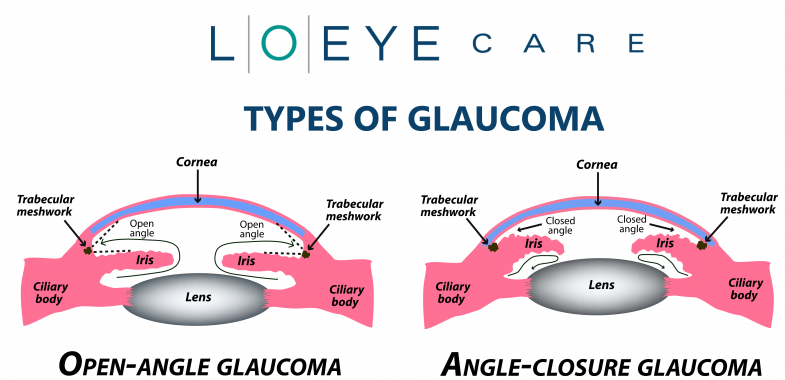
There are two main types of glaucoma: open-angle glaucoma and angle-closure glaucoma. Open-angle glaucoma develops slowly over time, while angle-closure glaucoma is characterized by sudden and severe symptoms.
Glaucoma Causes and Risk Factors:
The exact cause of glaucoma is not always clear, but factors such as family history, age, high blood pressure, and certain medications can increase the risk.
Recognizing Glaucoma Symptoms:
Common Symptoms:
Glaucoma often presents no early symptoms; consequently, regular eye exams are crucial for early detection. As the condition progresses, individuals may experience peripheral vision loss and tunnel vision.
The Importance of Regular Eye Exams:
Regular eye exams play a vital role in detecting glaucoma in its early stages when treatment can be most effective. Comprehensive eye exams include measuring IOP, assessing the optic nerve, and testing visual fields.
Treatment Options for Glaucoma:
Eye Drops and Medications:
Eye drops and oral medications are commonly used to lower IOP and manage glaucoma. These medications work by either reducing fluid production or increasing its drainage.
Laser Therapy:
Laser therapy, such as selective laser trabeculoplasty (SLT) or laser peripheral iridotomy (LPI), can improve the drainage of fluid from the eye, thus reducing IOP.
Surgical Procedures:
In cases where medications and laser therapy are insufficient, surgical procedures like trabeculectomy or drainage implants may be necessary to lower IOP and prevent further damage.
Cataract vs. Glaucoma: Key Differences
Nature of the Conditions:
Cataracts involve the clouding of the eye’s lens, while glaucoma affects the optic nerve and is often associated with elevated IOP.
Impact on Vision:
Cataracts primarily cause blurred vision, while glaucoma leads to gradual peripheral vision loss.
Treatment Approaches:
Cataracts are typically treated with surgery, while glaucoma management focuses on lowering IOP through medications, laser therapy, or surgery.
Preventing Cataracts and Glaucoma:
Eating a Nutrient-Rich Diet:
Consuming foods rich in antioxidants, such as leafy greens, citrus fruits, and nuts, can help protect the eyes from damage.
Protecting Your Eyes from UV Rays:
Wearing sunglasses and a wide-brimmed hat can shield your eyes from harmful UV rays and reduce the risk of cataract formation.
Managing Chronic Conditions:
Managing conditions like diabetes and high blood pressure through proper medical care and lifestyle changes can lower the risk of both cataracts and glaucoma.
Leading a Vision-Friendly Lifestyle:
The Role of Physical Activity:
Regular physical activity can improve blood circulation, which is beneficial for eye health.
Avoiding Smoking and Excessive Alcohol:
Both smoking and excessive alcohol consumption can increase the risk of developing cataracts and glaucoma.
Author Details:
Dr. Thanemozhi Srinivasan:
Dr. Thanemozhi Srinivasan is an esteemed ophthalmologist who has achieved remarkable success in the specialized field of glaucoma. With a diverse and illustrious background, she has garnered extensive experience and honed her expertise in diagnosing, managing, and treating this intricate eye condition. Driven by a profound dedication to her patients, Dr. Srinivasan embraces cutting-edge techniques and innovative treatments, aiming to optimize visual outcomes while delivering compassionate and individualized care. With her wealth of knowledge, remarkable proficiency, and unwavering commitment to excellence, Dr. Thanemozhi Srinivasan stands as a revered authority in the realm of glaucoma.

Book Your Appointment Now
Conclusion:
In the realm of eye health, understanding conditions like cataracts and glaucoma is paramount. By recognizing their symptoms, risk factors, and treatment options, individuals can take proactive steps to preserve their vision and overall well-being.
FAQs:
- Are cataracts and glaucoma related?
Cataracts and glaucoma are not directly related, but they are both eye conditions that can affect vision. Cataracts involve clouding of the eye’s lens, while glaucoma involves damage to the optic nerve due to increased eye pressure.
2. Which is more serious, cataracts or glaucoma?
Glaucoma is generally considered more serious as it can lead to irreversible vision loss if not managed. Cataracts can be treated with surgery to restore vision.
3. Can you get glaucoma and cataracts at the same time?
Yes, it’s possible to have both glaucoma and cataracts concurrently. However, they are distinct conditions with different causes and treatments.
4. What causes glaucoma?
Glaucoma is primarily caused by increased intraocular pressure (fluid pressure within the eye); this, in turn, damages the optic nerve over time. Consequently, this can result in gradual vision loss.
5. What are the 3 types of cataracts?
The three main types of cataracts are:
- Nuclear Cataracts: Develop in the center (nucleus) of the lens.
- Cortical Cataracts: Form in the lens cortex, the outer edge of the lens.
- Subcapsular Cataracts: Occur at the back of the lens, just beneath the lens capsule.
6. What is the difference between cataracts and glaucoma?
- Cataracts: Involve a clouding of the eye’s natural lens, causing blurred or reduced vision. They are treatable with surgery to replace the lens with an artificial one.
- Glaucoma: Results from damage to the optic nerve due to elevated intraocular pressure. It can lead to permanent vision loss if not managed, often with eye drops, surgery, or other treatments.


